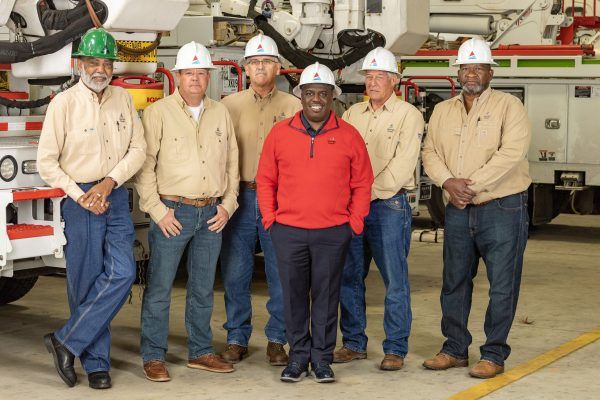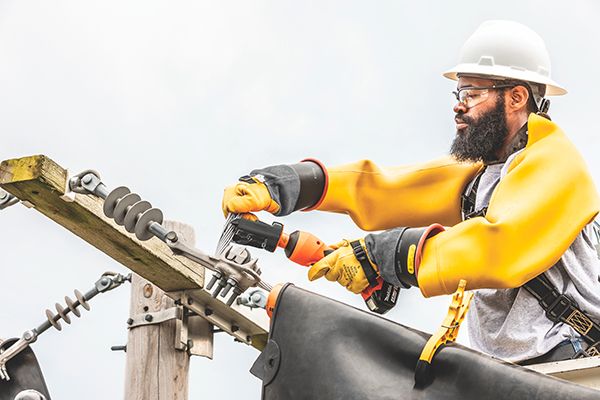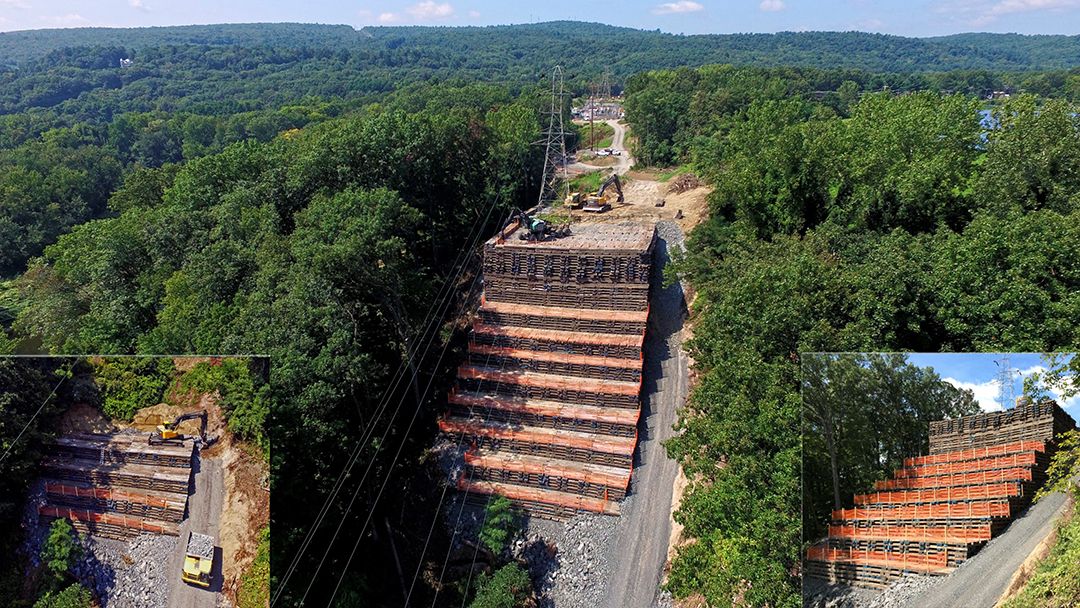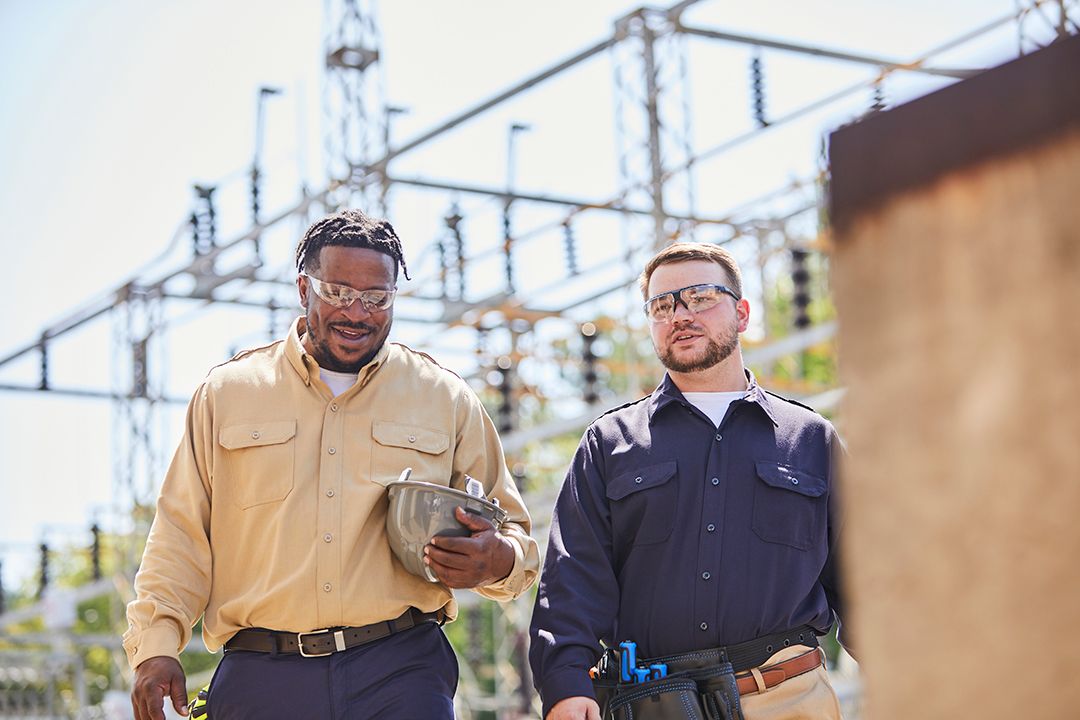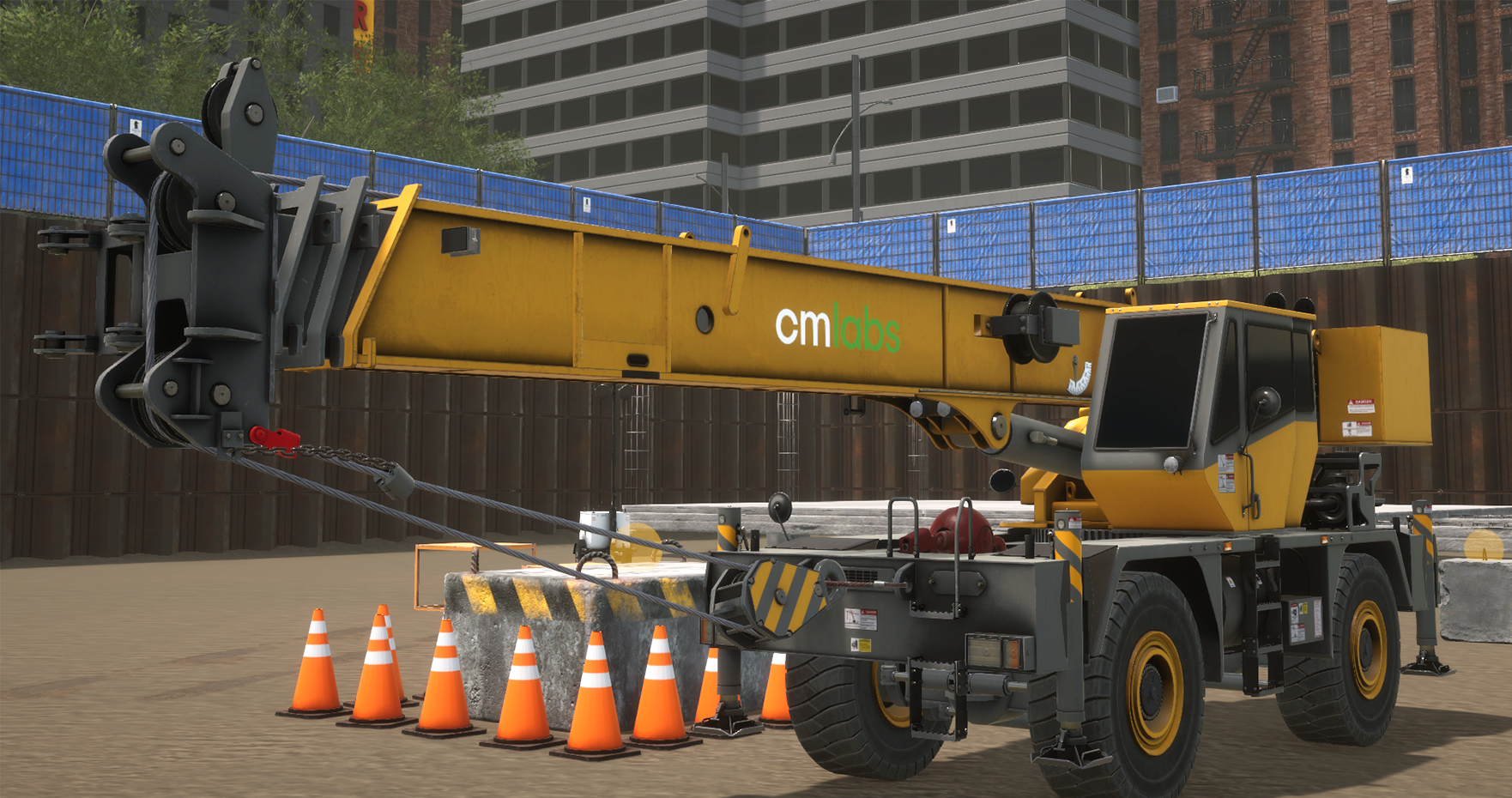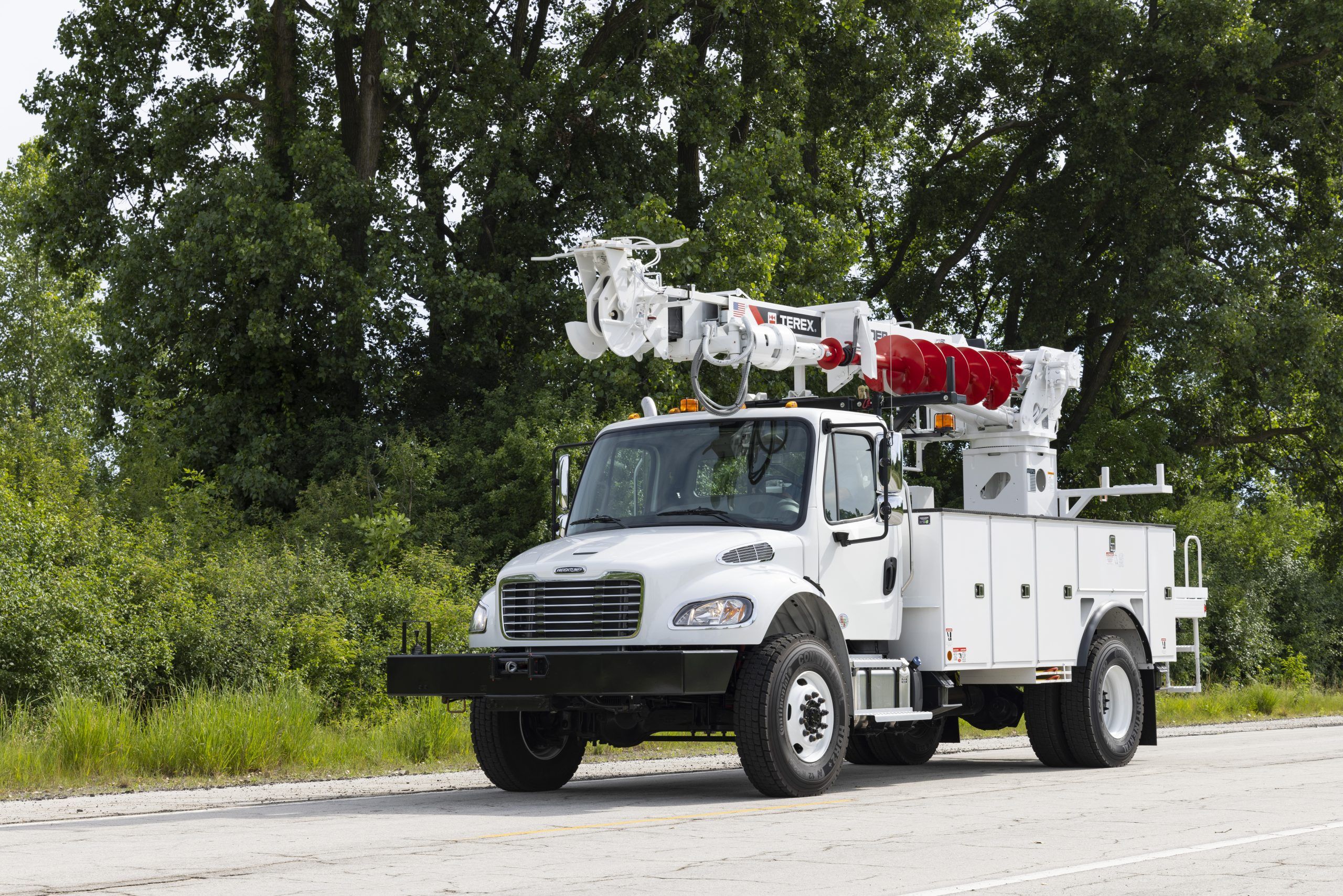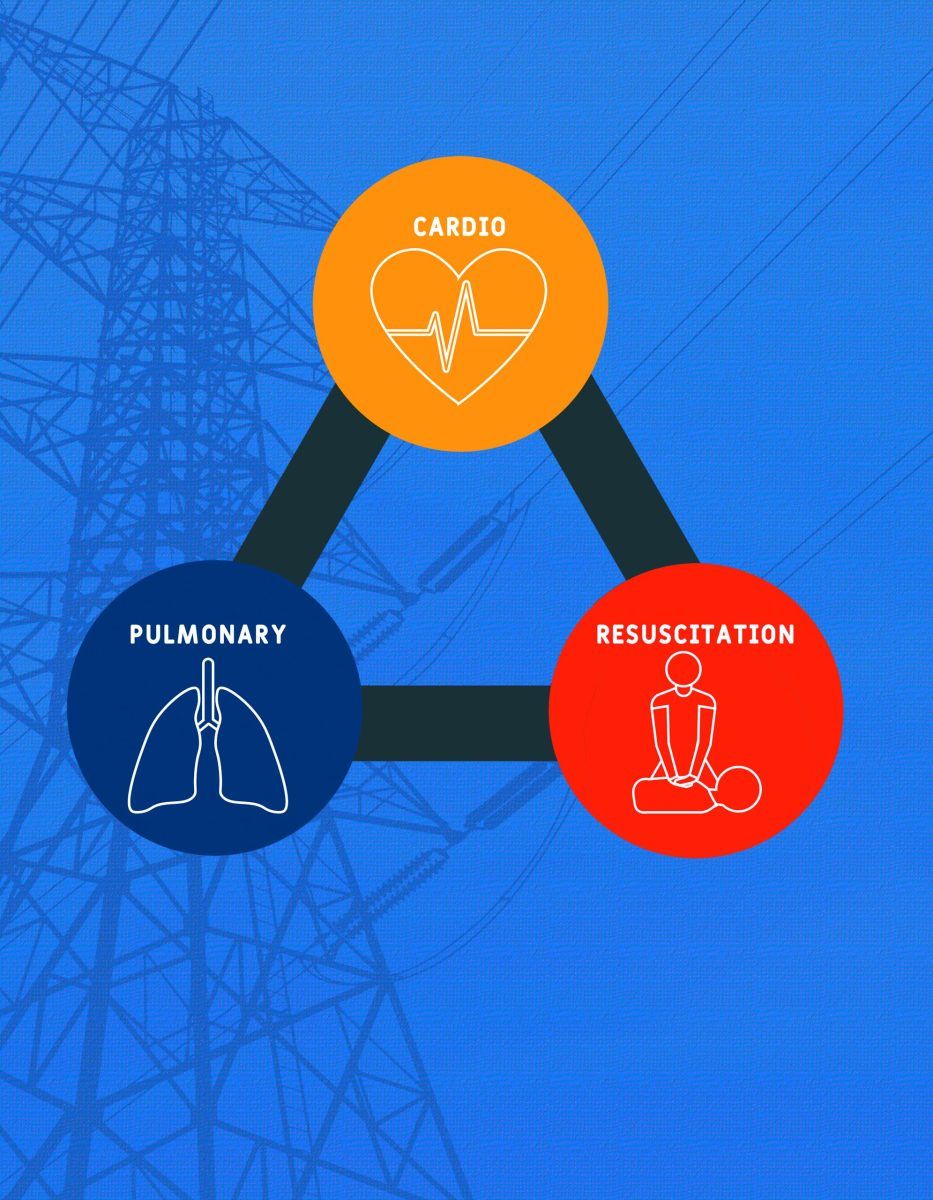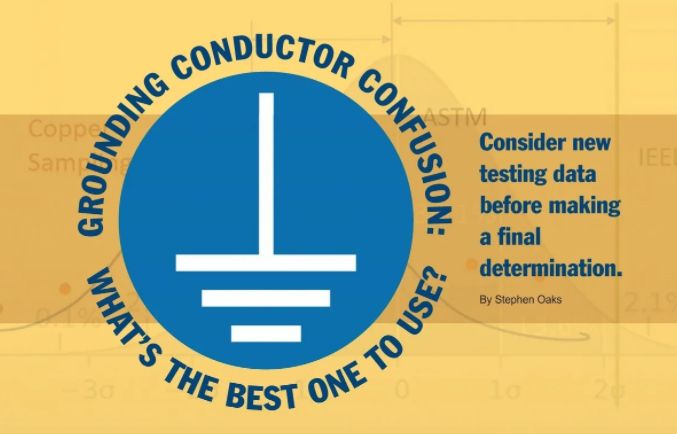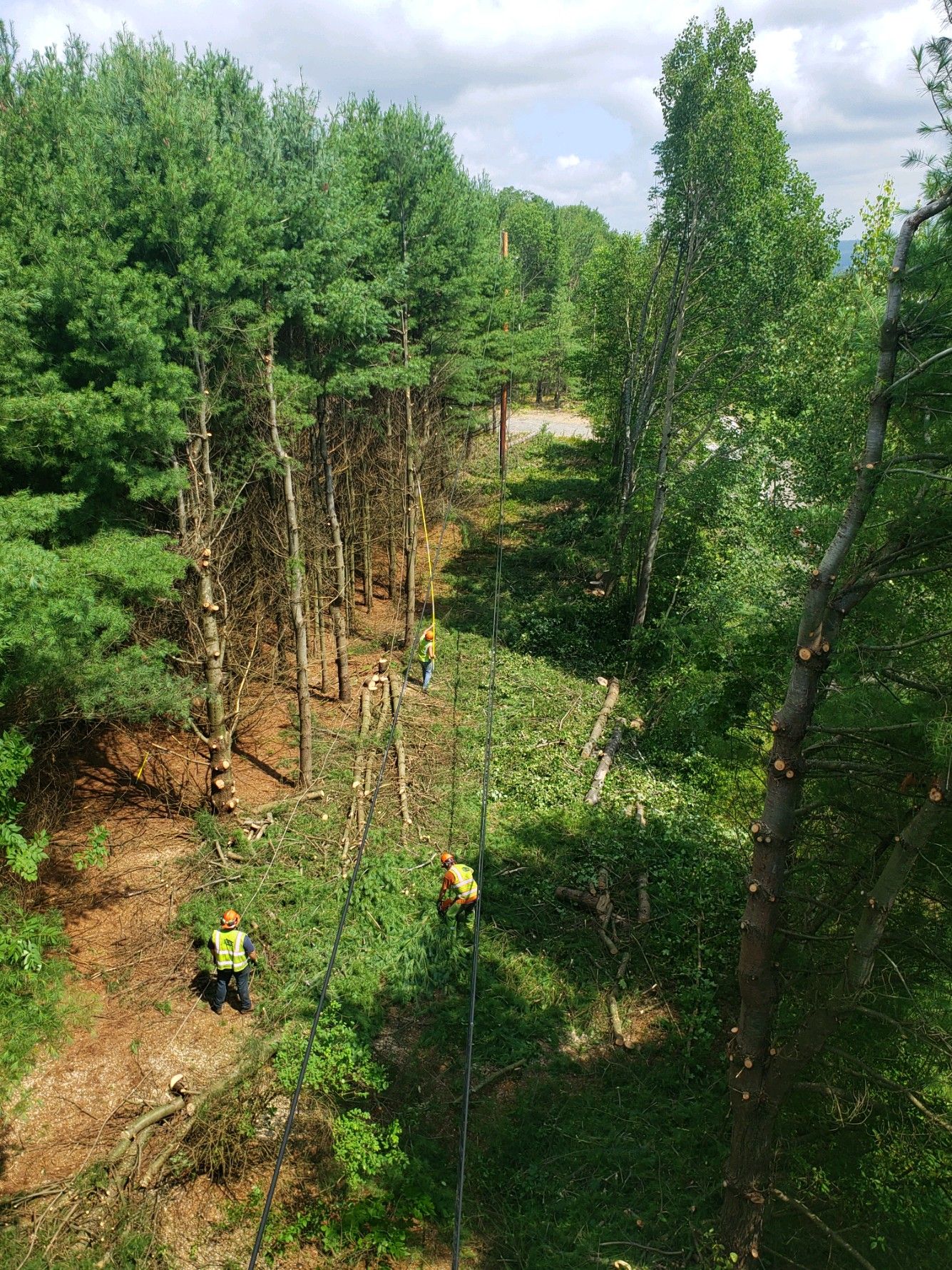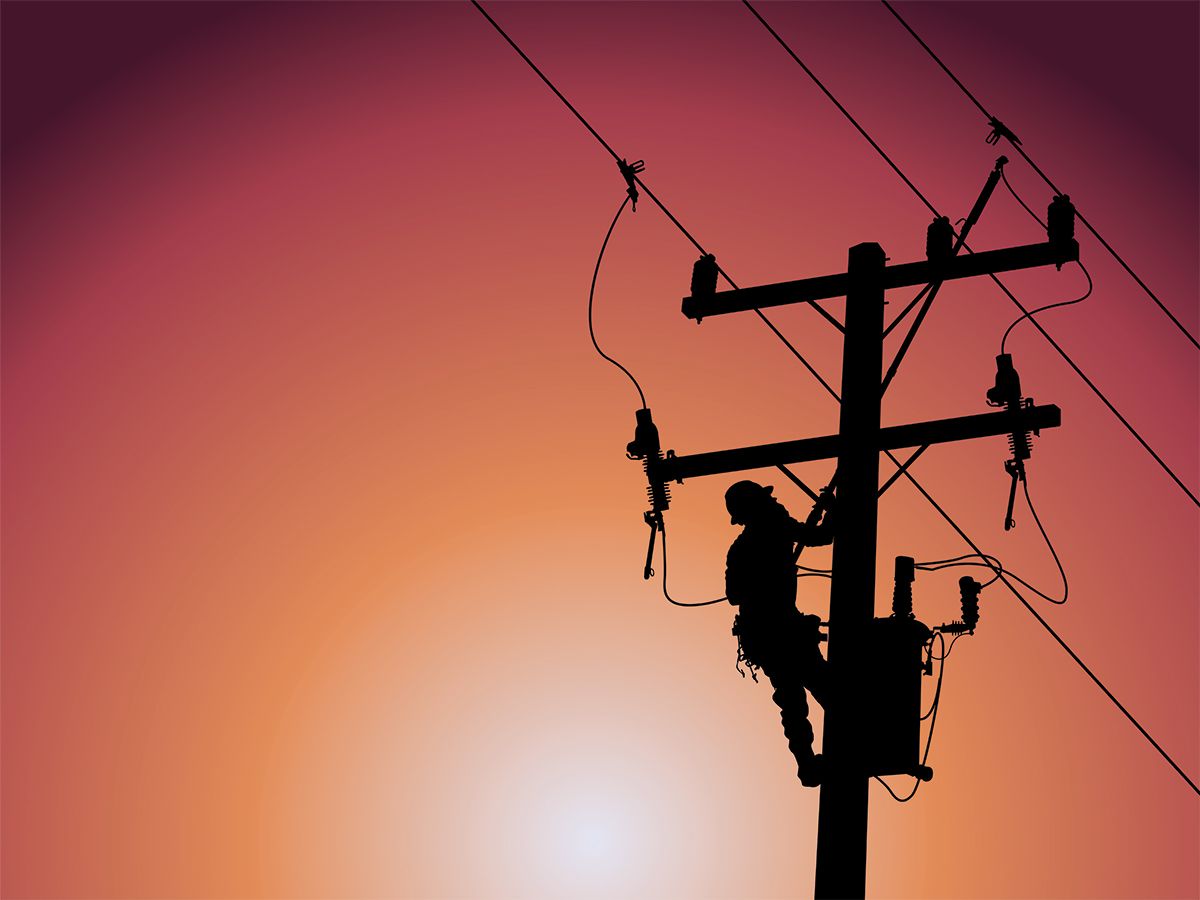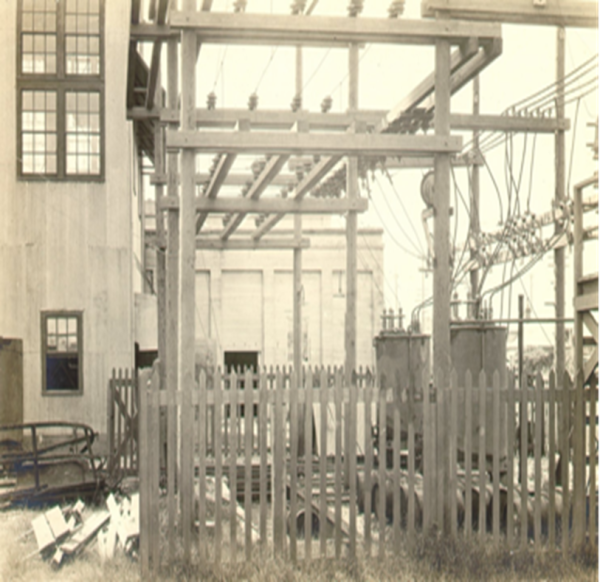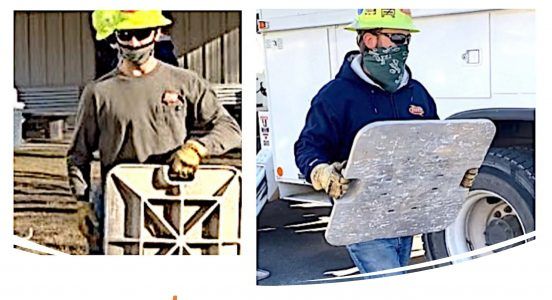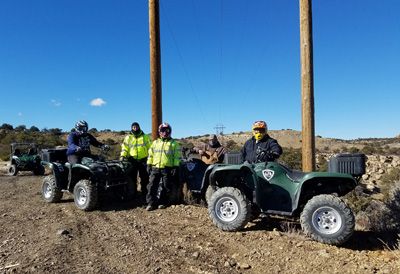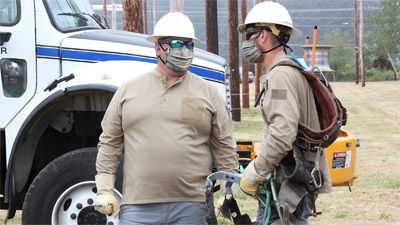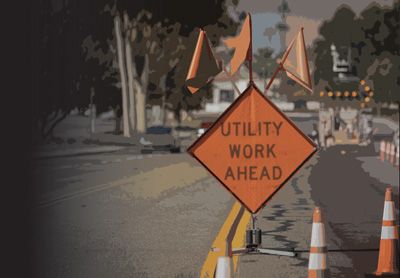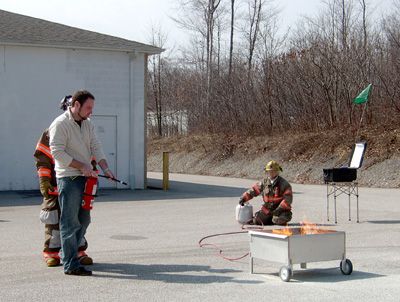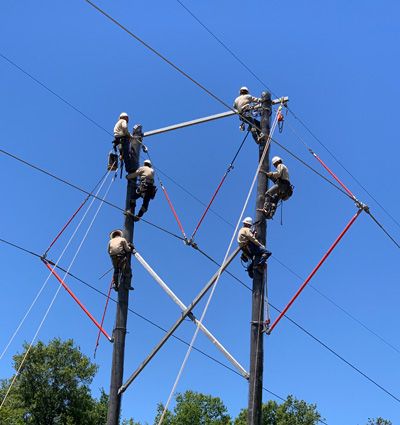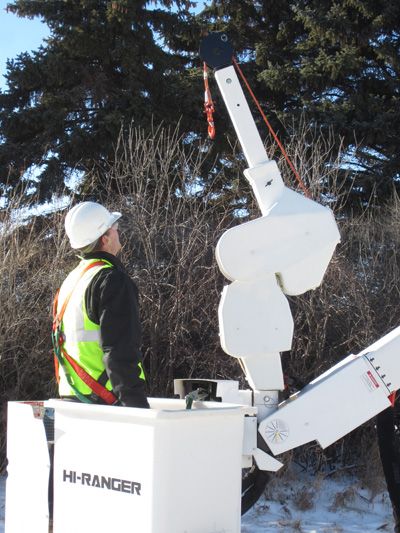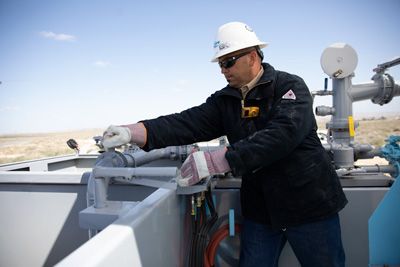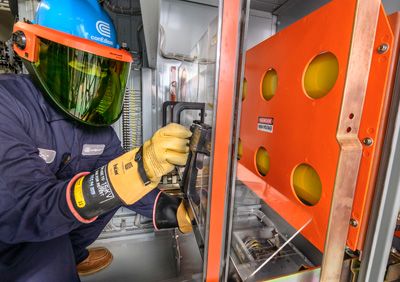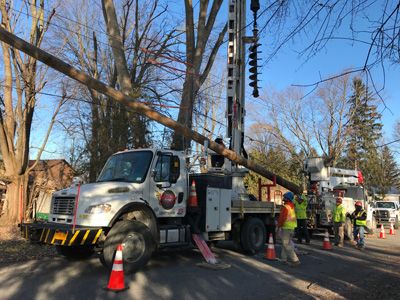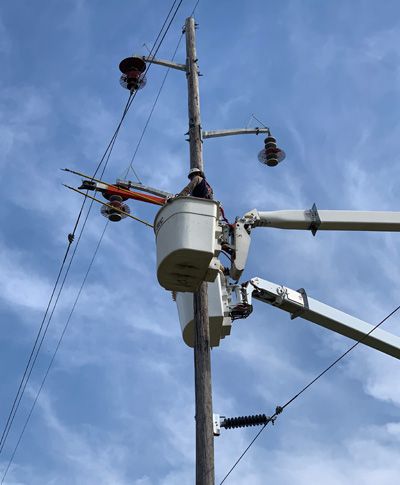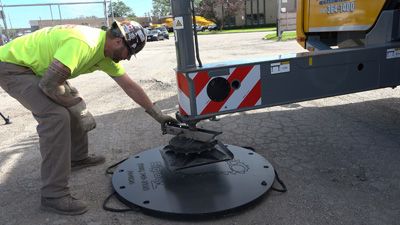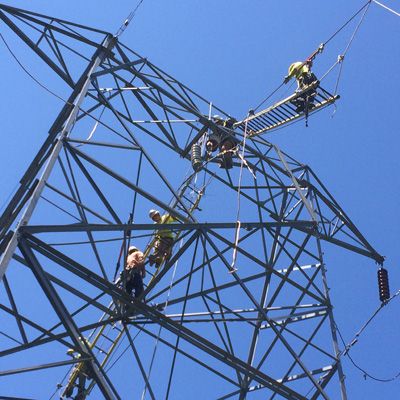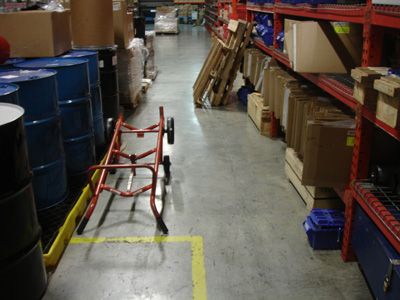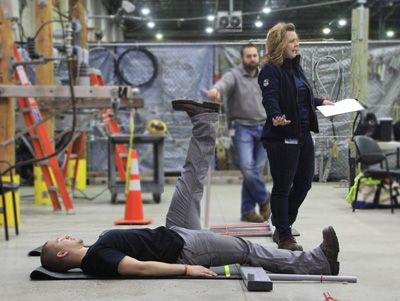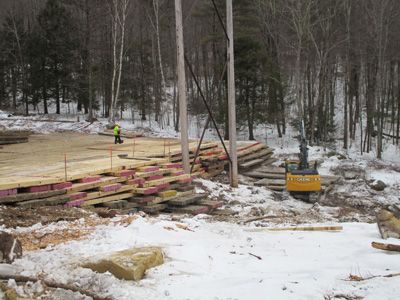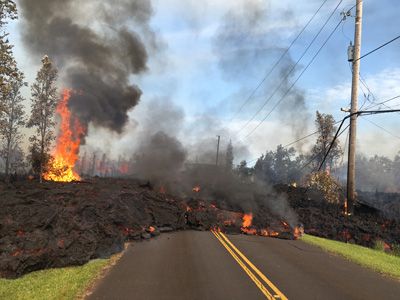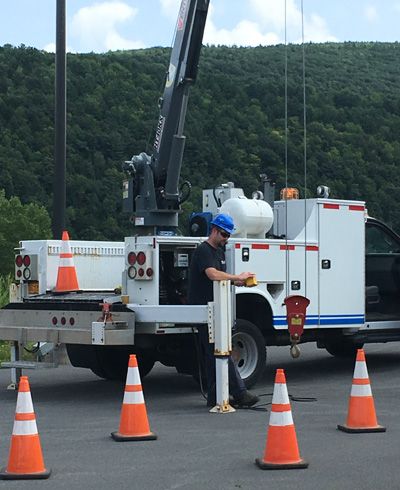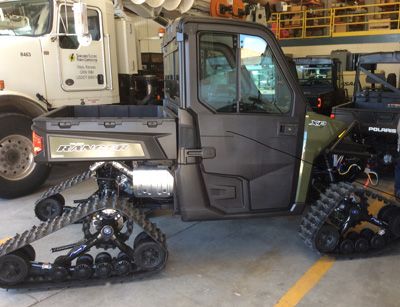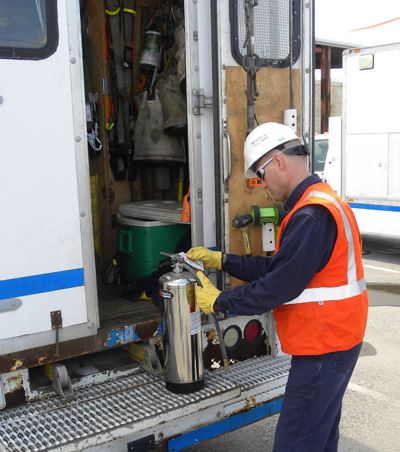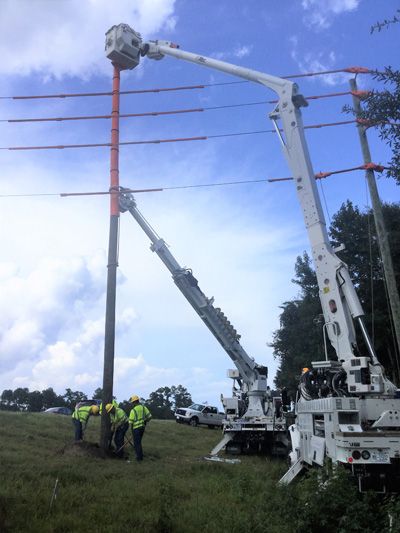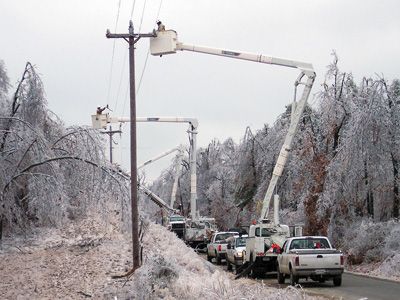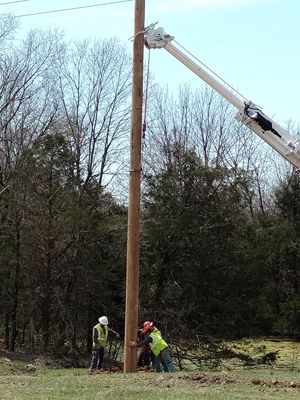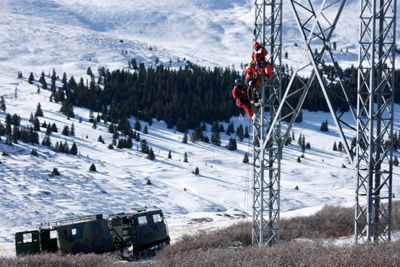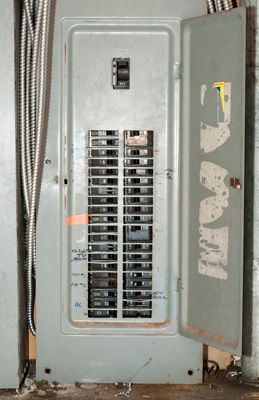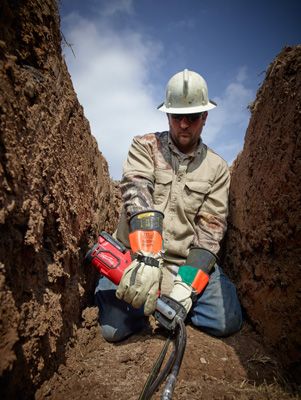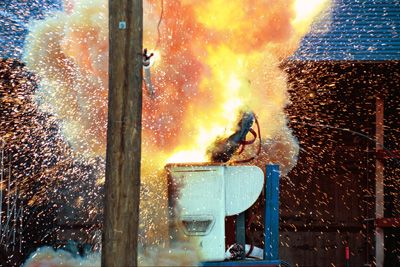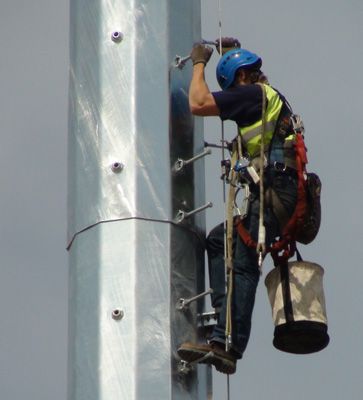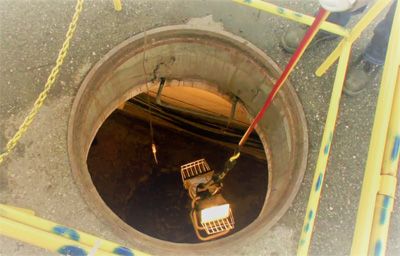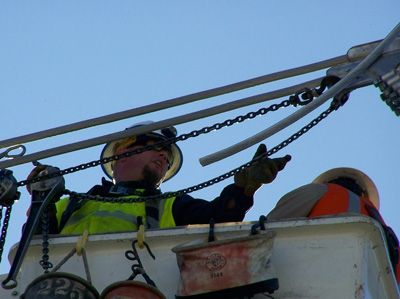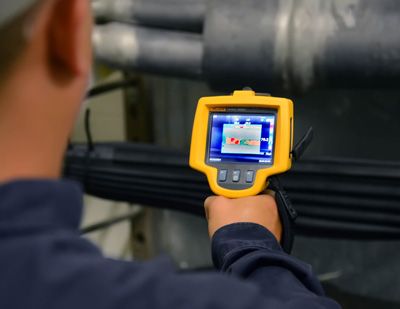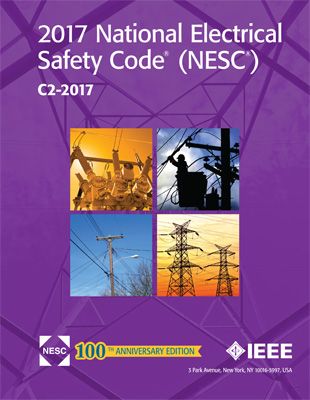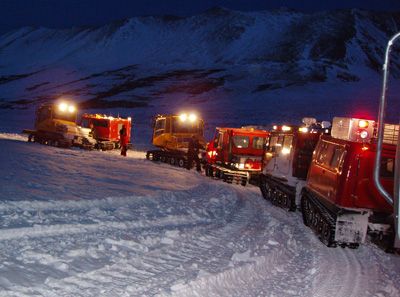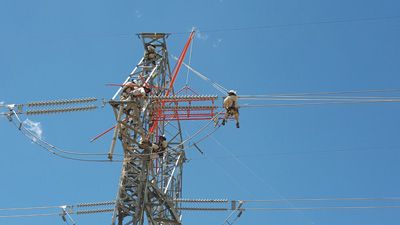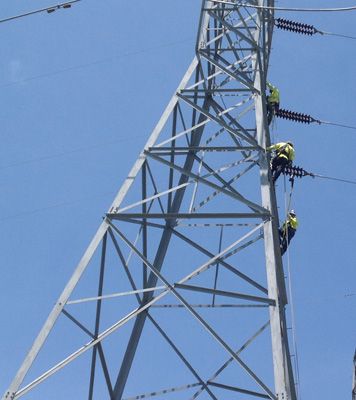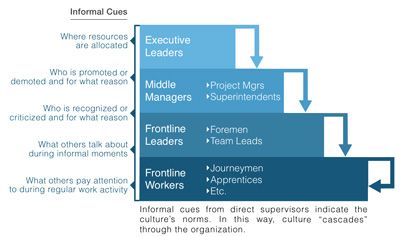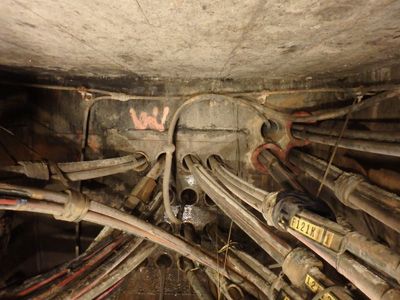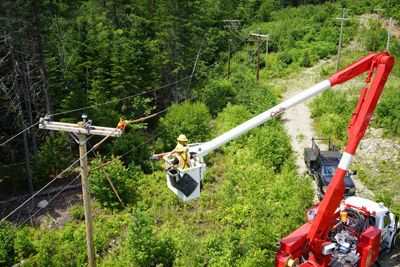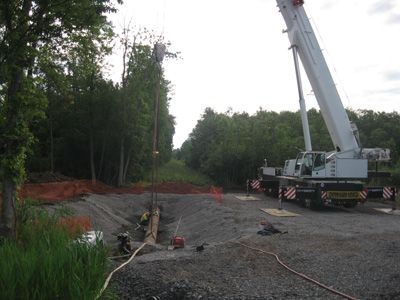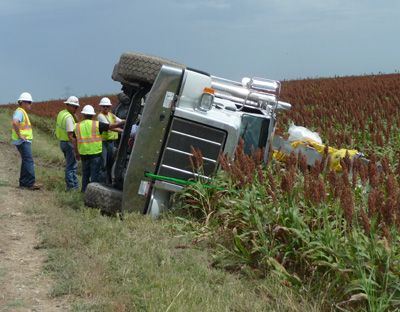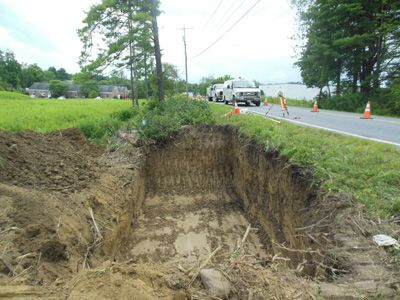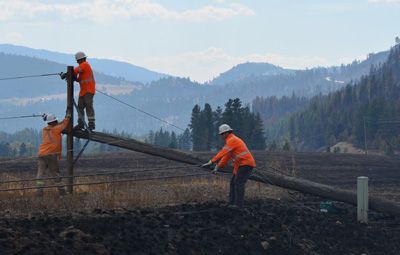Tag: Worksite Safety
Eyes on the Wire: The Year of Actively Caring
Written by Addy Apesos on . Posted in Safety Management, Worksite Safety.
Using Power Tools in the Bucket
Written by Ryan Berg and Jim Olson on . Posted in Worksite Safety.
Matted Surfaces: Safety Considerations and Controls
Written by Nathan Boutwell, M.Eng., CSP, SMS, CIT, CUSP; Nick Powers; and Bill Hinrichs, CUSP on . Posted in Worksite Safety.
3 Sustainability Considerations When Evaluating FR/AR Apparel
Written by Josh Moody on . Posted in Worksite Safety.
Advancing Workforce Skills Using Simulation-Based Training
Written by Christa Fairchild on . Posted in Worksite Safety, Equipment Operations.
Understanding Wind Speed Limitations on Utility Equipment
Written by Jim Olson on . Posted in Worksite Safety, Equipment Operations.
The Case for Enhanced First-Aid Training for Lineworkers
Written by William N. Martin, CUSP, NRP, RN, DIMM on . Posted in Worksite Safety.
June – July 2022 Q&A
Written by Jim Vaughn, CUSP on . Posted in Worksite Safety, Q & A.
Best Practices for Bucket Truck Rescue
Written by Ty Fenton on . Posted in Worksite Safety.
Heat Injury and Illness Prevention: Past, Present and Future
Written by Mike Starner, CUSP, CHST on . Posted in Worksite Safety.
Grounding Conductor Confusion: What’s the Best One to Use?
Written by Stephen Oaks on . Posted in Worksite Safety, Grounding.
Lineworkers and Line-Clearance Workers: Understanding Their Similarities and Differences
Written by Philip Moran, CTSP, CUSP on . Posted in Worksite Safety.
Actionable Safety: Modeling Change for Line Crews
Written by William N. Martin, CUSP, NRP, RN, DIMM on . Posted in Worksite Safety.
A Historical Review of Workplace Safety in the U.S.
Written by Rayford “RL” Grubbs, CUSP on . Posted in Worksite Safety.
Establishing a Comprehensive Ergonomics Program During a Pandemic
Written by Lisa Harris on . Posted in Worksite Safety.
Building an ATV/UTV Training Program for Utilities and Contractors
Written by Ty Fenton and Chuck Kevwitch on . Posted in Worksite Safety, Equipment Operations.
FR/AR Clothing Considerations During the COVID-19 Pandemic
Written by Derek Sang and Scott Margolin on . Posted in Worksite Safety.
Drive Safe. Work Safe. Save Lives.
Written by Marilyn M. Velez, MPH on . Posted in Worksite Safety, Tailgate Topics.
Minimum Approach Distances: What’s Required?
Written by Matt Edmonds, CUSP, CIT, CHST, and Pam Tompkins, CSP, CUSP on . Posted in Worksite Safety, OSHA Articles.
Fire Extinguisher Use and Safety for Utility Workers
Written by Steve Nash on . Posted in Worksite Safety.
Arc Rating Standards for Personal Protective Equipment
Written by Zarheer Jooma, P.E., and Hugh Hoagland on . Posted in Worksite Safety.
Why are Job Briefings and Risk Assessments Important?
Written by Matt Edmonds, CUSP, CIT, CHST, and Pam Tompkins, CSP, CUSP on . Posted in Worksite Safety, OSHA Articles.
What are OSHA’s Training Requirements?
Written by Matt Edmonds, CUSP, CIT, CHST, and Pam Tompkins, CSP, CUSP on . Posted in Worksite Safety, OSHA Articles.
Are You Using Your Five Senses to Stay Safe?
Written by Michael Stremel, CUSP on . Posted in Worksite Safety.
I’ve Got Your Back: Lessons in Socio-Biomimicry
Written by Alden B. Davis on . Posted in Worksite Safety.
Safety Success During an Insulating Boom Flashover
Written by Jace Kerby on . Posted in Worksite Safety.
Best Practices for Using Your Aerial Device Jib to Handle Transformers
Written by Roger Crom and Jim Olson, P.E. on . Posted in Worksite Safety, Equipment Operations.
Mother Nature vs. FR/AR Clothing
Written by Derek Sang, CSHEP, QSSP on . Posted in Worksite Safety.
Working in Switchgear Cubicles Just Got Safer
Written by Eric M. Fell on . Posted in Worksite Safety.
Take Your Time and Follow the Rules – Or Pay the Price
Written by Luis Ortega, CUSP Emeritus on . Posted in Worksite Safety.
Are You Taxing the Variables?
Written by William N. Martin, CUSP, NRP, RN, DIMM on . Posted in Worksite Safety.
When OSHA Knocks
Written by Dennis Childress on . Posted in Worksite Safety.
Using Situational Awareness to Enhance Field Security
Written by Jim Willis, CMAS, CHS-V on . Posted in Worksite Safety.
The Safe Use of Outrigger Pads for Equipment Stability
Written by Jeff Steiner on . Posted in Worksite Safety.
Emergency Response Training for Electric Utility Workers
Written by Mark Werndorf, CUSP on . Posted in Worksite Safety.
Investigating and Documenting Slips, Trips and Falls
Written by Chip Darius, CUSP, OHST, CET, CSHO on . Posted in Worksite Safety.
Strength and Conditioning Strategies to Prepare the Next-Generation Utility Worker
Written by Jeremy Verrillo, ATC, CEAS III, CWcHP, CMMSS on . Posted in Worksite Safety.
Overcoming Conflict on the Right-of-Way
Written by Jesse Hardy, CSP, CIT, CUSP on . Posted in Worksite Safety.
The Hard Hat Celebrates 100 Years
Written by Stacey Simmons on . Posted in Worksite Safety.
How Hawaii Electric Light Co. Protected Employees During a Lava Flow
Written by David Spooner on . Posted in Worksite Safety.
Using Task-Based Work Assignments to Create Proficient Crews
Written by Debbie Dickinson on . Posted in Worksite Safety.
Enhancing Safety for Line Patrol Technicians
Written by Rob D. Adams, CLCP, CUSP, and Pete Prast, P.E. on . Posted in Worksite Safety, Equipment Operations.
Train the Trainer 101: The Value of a Site-Specific Health and Safety Plan
Written by Jim Vaughn, CUSP on . Posted in Worksite Safety, Train the Trainer 101.
Innovative Fire Suppression Solutions for System and Worker Safety
Written by Edward Morson and Mark Green on . Posted in Worksite Safety.
Key Concepts of an Insulate and Isolate Program
Written by Danny Bost, CUSP on . Posted in Worksite Safety.
Using Technology to Eliminate Aerial Device Overloads
Written by Dan Brenden on . Posted in Worksite Safety, Equipment Operations.
Safety Concerns When Setting Wooden Utility Poles
Written by Luis Ortega, CUSP Emeritus on . Posted in Worksite Safety.
Understanding Hypothermia in the Outdoor Work Environment
Written by Arthur Seely and Steve Andreas on . Posted in Worksite Safety.
Overcoming Barriers to Crane and Rigging Skills Development
Written by Debbie Dickinson on . Posted in Worksite Safety, Equipment Operations.
October 2017 Q&A
Written by Jim Vaughn, CUSP on . Posted in Worksite Safety, Q & A.
7 Electrical Theory and Circuitry Myths – Busted
Written by Dave Johnson, CUSP, and Mack Turner, CUSP on . Posted in Worksite Safety.
The Science of Keeping Workers Safe
Written by Raffi Elchemmas, MBA, AEP, and Sarah Hall on . Posted in Worksite Safety.
Voice of Experience: De-Energizing Lines and Equipment for Employee Protection
Written by Danny Raines, CUSP on . Posted in Worksite Safety, Voice of Experience.
August 2017 Q&A
Written by Jim Vaughn, CUSP on . Posted in Safety Management, Worksite Safety, Q & A, Grounding.
Making Sense of Protection Requirements for Open-Air Arc Flash Hazards
Written by Lee Marchessault, CUSP on . Posted in Safety Management, Worksite Safety.
Injury Risks Associated with Climbing in the Wind Energy Generation Industry
Written by Naira Campbell-Kyureghyan, Ph.D. on . Posted in Safety Management, Worksite Safety.
Train the Trainer 101: Training and Verification Requirements for the Safety of Electric Utility Workers
Written by Jim Vaughn, CUSP on . Posted in Safety Management, Worksite Safety, Train the Trainer 101.
Voice of Experience: Qualified and Task-Specific Electrical Worker Training
Written by Danny Raines, CUSP on . Posted in Safety Management, Worksite Safety.
June 2017 Q&A
Written by Jim Vaughn, CUSP on . Posted in Safety Management, Worksite Safety, Q & A, Equipment Operations, Grounding.
Confined Space Training: It Has to Be Done Right the First Time
Written by Tony Barton on . Posted in Safety Management, Worksite Safety.
Shining a Light on Ventilation Systems and Surveys in the Electric Power Industry
Written by Connie L. Muncy, CIH, CUSP, MS, REM on . Posted in Safety Management, Worksite Safety.
Marking a Safety Milestone at Silicon Valley Power
Written by Damon Beck on . Posted in Safety Management, Worksite Safety.
Using Thermography for Underground Worker Safety
Written by Peter Tyschenko and Michael Meathe on . Posted in Safety Management, Worksite Safety.
Train the Trainer 101: Addressing Common Fall Protection Questions and Concerns
Written by Jim Vaughn, CUSP on . Posted in Safety Management, Worksite Safety, Train the Trainer 101.
April 2017 Q&A
Written by Jim Vaughn, CUSP on . Posted in Safety Management, Worksite Safety, Q & A.
Frontline Fundamentals: Risk Tolerance
Written by David McPeak, CUSP, CIT, CHST, CSP, CSSM on . Posted in Safety Management, Leadership Development, Worksite Safety, Frontline Fundamentals.
Equipotential Grounding: Lessons Learned in the Field
Written by Dwight Miller, CLCP, CUSP on . Posted in Safety Management, Worksite Safety, Grounding.
Understanding and Preventing Lower Back Pain in the Electric Utility Industry
Written by Dr. Andrew Murro, DC, DABCO on . Posted in Safety Management, Worksite Safety.
Maximizing Your Arc-Rated Gear
Written by Hugh Hoagland and Stacy Klausing, M.S. on . Posted in Safety Management, Worksite Safety.
Train the Trainer 101: The New Walking-Working Surfaces Final Rule
Written by Jim Vaughn, CUSP on . Posted in Safety Management, Worksite Safety, Train the Trainer 101.
Voice of Experience: Inspection, Maintenance and Fall Protection Guidance for Bucket Truck Use
Written by Danny Raines, CUSP on . Posted in Safety Management, Worksite Safety, Voice of Experience, Equipment Operations.
February 2017 Q&A
Written by Jim Vaughn, CUSP on . Posted in Safety Management, Leadership Development, Worksite Safety, Q & A, Equipment Operations.
New Updates to the National Electrical Safety Code
Written by Sam Stonerock on . Posted in Safety Management, Worksite Safety.
Emergency Preparedness for Remote Winter Work Locations
Written by Todd Horning on . Posted in Safety Management, Worksite Safety.
Rope Access for Live-Line Work
Written by Thomas Penner on . Posted in Safety Management, Worksite Safety, Equipment Operations.
Train the Trainer 101: Understanding Canine Behavior for the Protection of Utility Workers: Part Two
Written by Jim Vaughn, CUSP on . Posted in Safety Management, Worksite Safety, Train the Trainer 101.
Voice of Experience: Switching and Working on UD Systems
Written by Danny Raines, CUSP on . Posted in Safety Management, Worksite Safety, Voice of Experience, Equipment Operations.
December 2016 Q&A
Written by Jim Vaughn, CUSP on . Posted in Safety Management, Worksite Safety, Q & A, Equipment Operations, Grounding.
Safety Best Practices for Outage Season
Written by Jordan Hollingsworth, CHST, CSP, CUSP on . Posted in Safety Management, Worksite Safety, Grounding.
Assimilating Short-Service Employees Into Your Safety Culture
Written by Phillip Ragain on . Posted in Safety Management, Leadership Development, Worksite Safety.
Underground Electrical Vaults: Safety Concerns and Controls
Written by Chris Grajek, CRSP, CUSP on . Posted in Safety Management, Worksite Safety.
Train the Trainer 101: Understanding Canine Behavior for the Protection of Utility Workers
Written by Jim Vaughn, CUSP on . Posted in Safety Management, Worksite Safety, Train the Trainer 101.
Voice of Experience: OSHA’s MAD Changes and a Missed Opportunity
Written by Danny Raines, CUSP on . Posted in Safety Management, Worksite Safety, Voice of Experience.
October 2016 Q&A
Written by Jim Vaughn, CUSP on . Posted in Safety Management, Worksite Safety, Q & A, Equipment Operations.
The Causes and Prevention of Shoulder Injuries in the Electric Distribution Field
Written by Dr. Andrew Murro, DC, DABCO on . Posted in Safety Management, Worksite Safety.
The Road to an Innovative, Award-Winning Safety Program
Written by Brad Stout and Jesse Gibbon on . Posted in Safety Management, Leadership Development, Worksite Safety.
Tricks of the Trade to Improve the Trenching Environment
Written by Jarred O'Dell, CSP, CUSP on . Posted in Safety Management, Worksite Safety.
Train the Trainer 101: Practical Personal Grounding in Underground Work
Written by Jim Vaughn, CUSP on . Posted in Safety Management, Worksite Safety, Train the Trainer 101.
Voice of Experience: OSHA Requirements for Step Potential Protection
Written by Danny Raines, CUSP on . Posted in Safety Management, Worksite Safety, Voice of Experience.
August 2016 Q&A
Written by Jim Vaughn, CUSP on . Posted in Safety Management, Worksite Safety, Q & A, Equipment Operations.
10 Tips for Better Incident Investigations
Written by Thomas Ray, CSP, CUSP on . Posted in Safety Management, Leadership Development, Worksite Safety, Tailgate Topics.
Protective Systems for Trenching and Excavations
Written by Jarred O'Dell, CSP, CUSP on . Posted in Safety Management, Worksite Safety.
The Job Brief’s Hidden Influence on Utility Safety
Written by Michael Burnham, CSP, CUSP on . Posted in Safety Management, Leadership Development, Worksite Safety.
Fire Restoration Best Practices for Utilities
Written by Chris Grajek, CRSP, CUSP on . Posted in Safety Management, Worksite Safety.
Train the Trainer 101: Practical Recommendations for Wire Stringing
Written by Jim Vaughn, CUSP on . Posted in Safety Management, Worksite Safety, Train the Trainer 101, Equipment Operations.
Confined Spaces in Construction
Written by Danny Raines, CUSP on . Posted in Safety Management, Worksite Safety.
June 2016 Q&A
Written by Jim Vaughn, CUSP on . Posted in Safety Management, Worksite Safety, Q & A, Equipment Operations, Grounding.
Don’t Leave Employees to Fill in the Blanks
Written by Dave Sowers on . Posted in Safety Management, Leadership Development, Worksite Safety.
Soil Mechanics in the Excavation Environment
Written by Jarred O'Dell, CSP, CUSP on . Posted in Safety Management, Worksite Safety.



